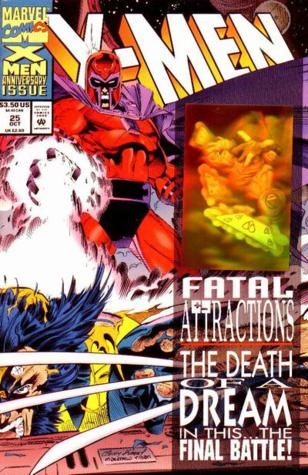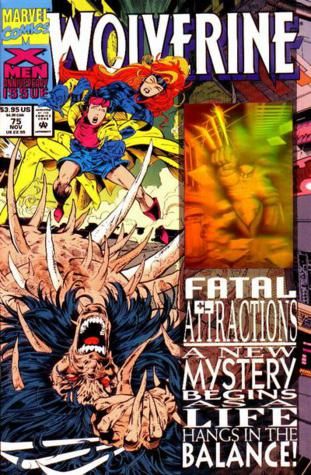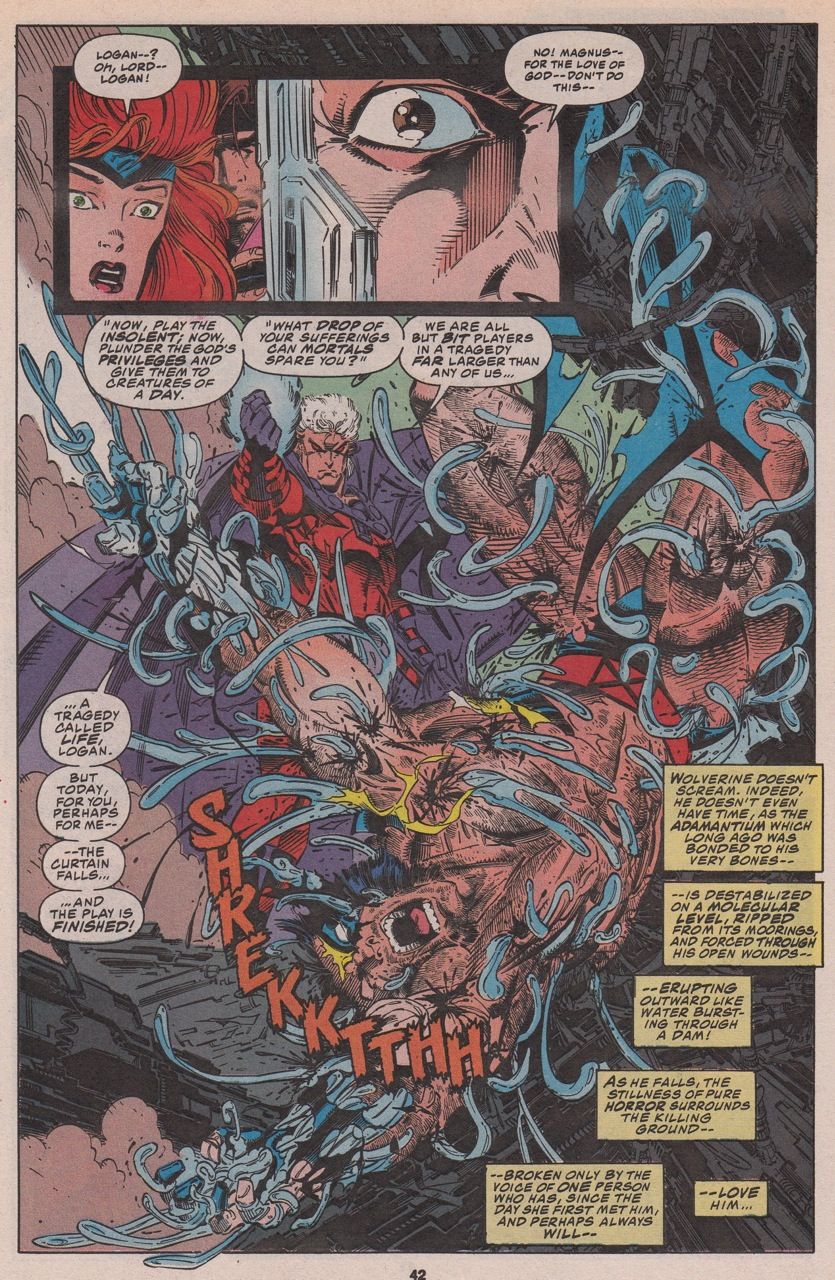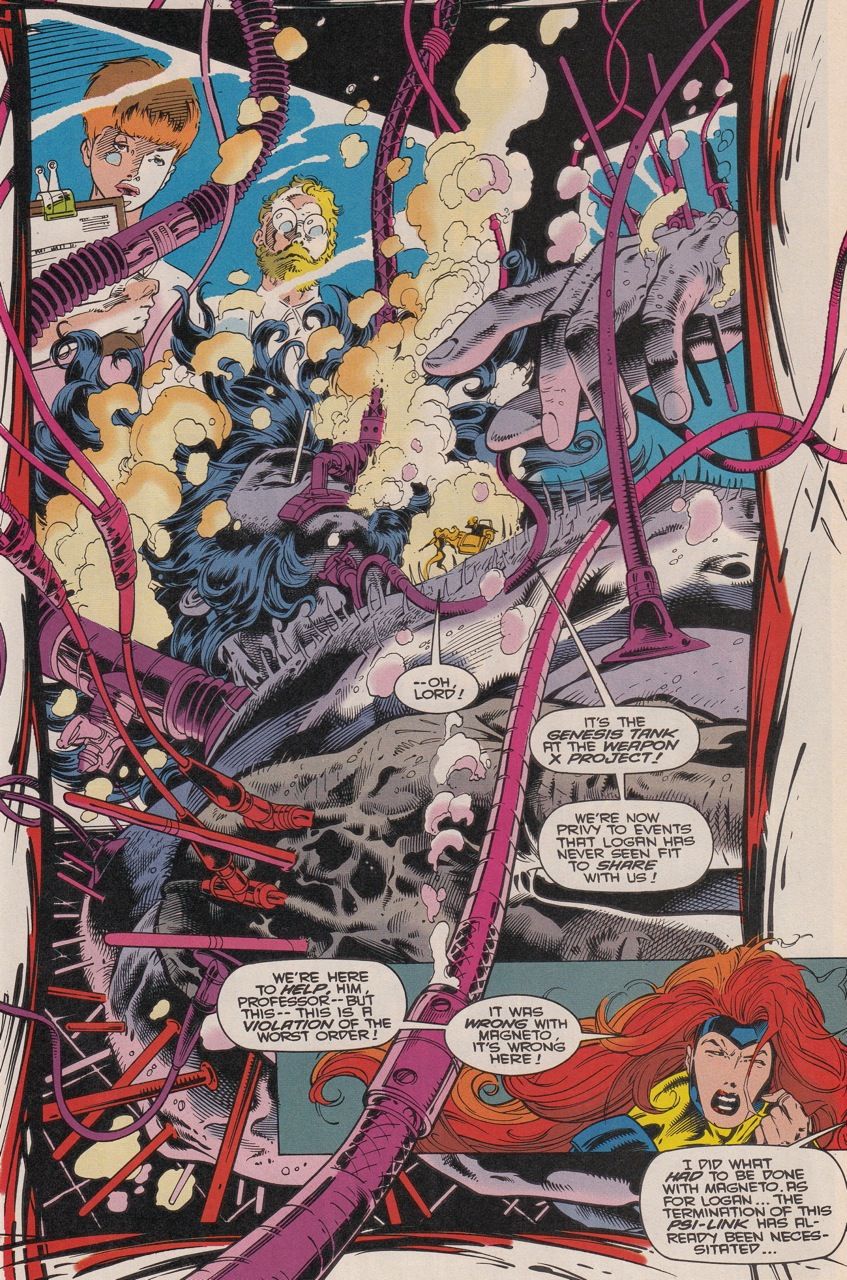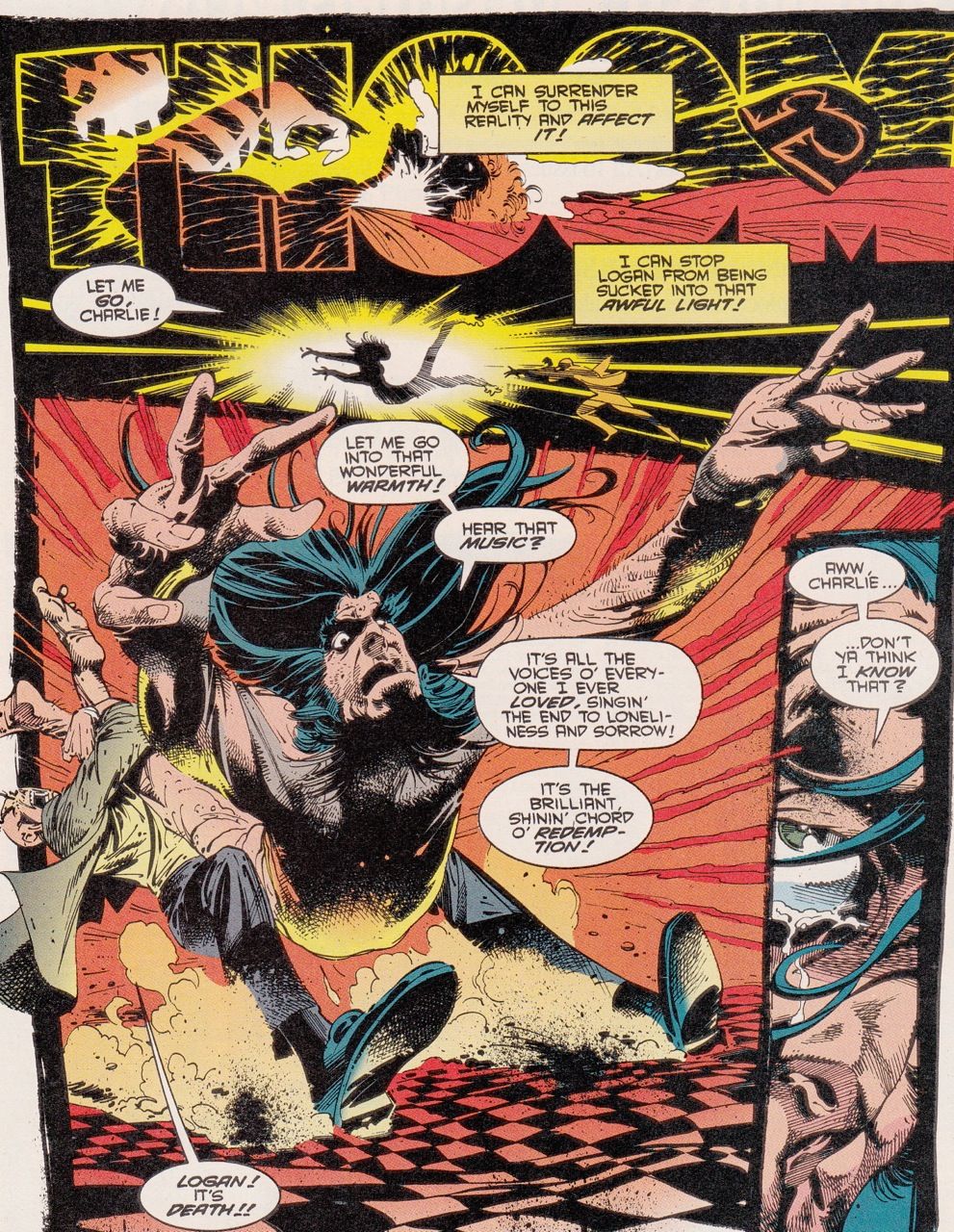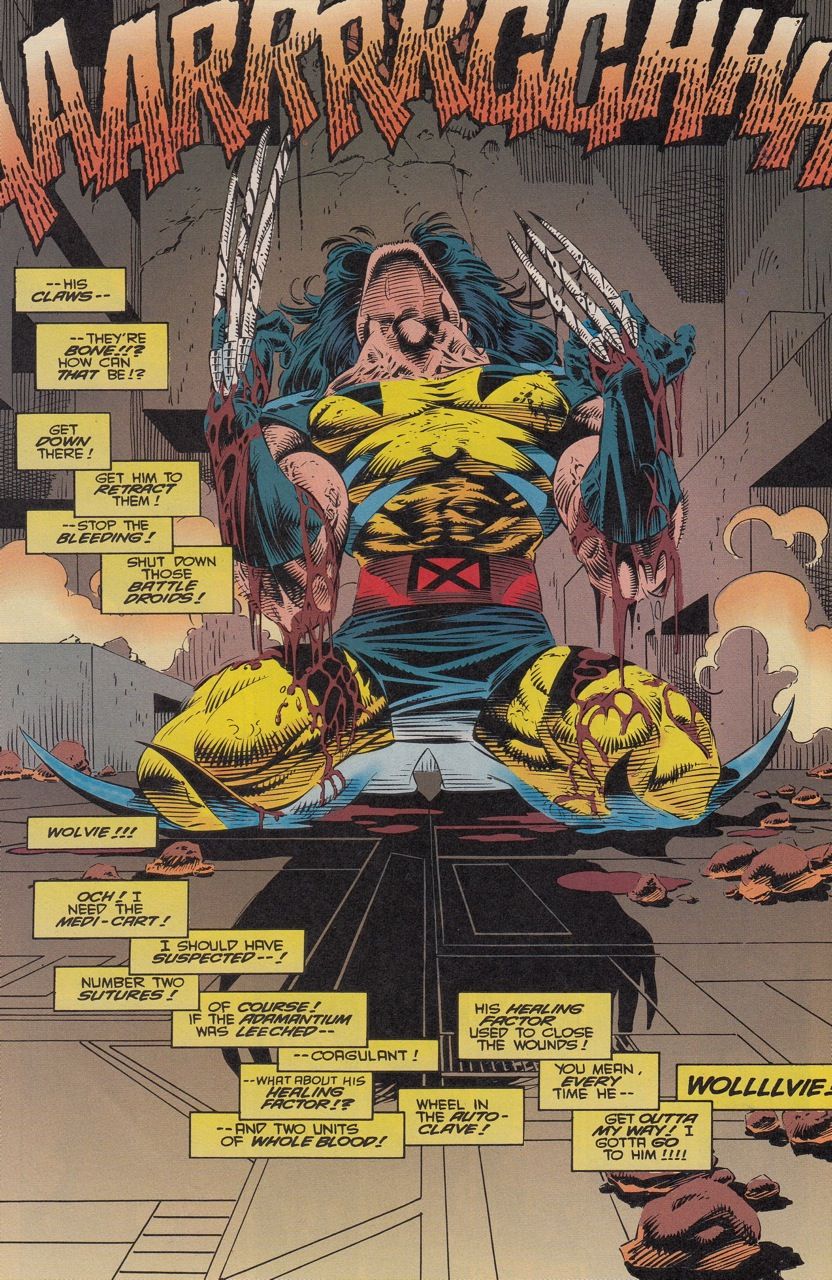In this column, Mark Ginocchio (from Chasing Amazing) takes a look at the gimmick covers from the 1990s and gives his take on whether the comic in question was just a gimmick or whether the comic within the gimmick cover was good. Hence "Gimmick or Good?" Here is an archive of all the comics featured so far. We continue with 1993's hologram covers for X-Men #25 and Wolverine #75...
X-Men #25 (published October 1993) – script by Fabian Nicieza, pencils by Andy Kubert, inks by Matthew Ryan; and Wolverine #75 (November 1993) – script by Larry Hama, art by Adam Kubert, Mark Farmar, Dan Green and Mark Pennington
In celebration of the 30th anniversary of Uncanny X-Men #1, Marvel published six giant-sized commemorative comics (one for every “X” title) in 1993 each with a special holographic panel on the cover (the comics also all featured wraparound covers). The comics were all part of the “Fatal Attractions” arc, which saw the return of Magneto and his Acolytes and a number of status quo changes in the X-Men universe. But the most famous development to emerge from “Fatal Attractions” involved the world’s most celebrated mutant Canuck, Wolverine. With his new movie opening this weekend, I thought it was apropos to focus on the two installments of this arc that focused on Mr. Logan.
But what about inside the comics?
Like my review of Green Lantern #50, I have a sneaking suspicion that no matter which way I go with my verdict of these two comics, I’m going to inevitably tick off a contingent of X-Men/Wolverine fans. By late 1993 when “Fatal Attractions” was published, it had basically become a tired act for comic book publishers to use “special edition” issues to shake up a character or super-team. In the case of X-Men #25, Wolverine is brought to the brink of death when Magneto shockingly rips the adamantium from his adamantium-laced skeleton from his body (in a storyline, as Brian Cronin reported on this site years, was pitched as a joke by Peter David for the “X-Cutioner’s Song” arc). In Wolverine #75, Logan fights for life, and after miraculously surviving the attack, discovers his retractable claws are actually part of his skeleton (thus giving him bone claws).
As David himself tells the story, having Magneto rip out the adamantium from Wolverine’s skeleton is both an incredibly pragmatic thing for a villain to do to an adversary, and a monumentally terrible idea if the creative team insists on having Logan survive the attack. Sure, Wolverine has a “healing factor” which can conveniently explain away all kinds of plot contrivance, but how can one feasibly justify why Logan can survive getting an entire skeleton's worth of metal yanked from his body all at once?
And yet, I found myself very entertained by this story. There are still some things that annoy me – like how even without Chris Claremont weighing down the 90s-riffic splash pages with Shakespearean blocks of text, Nicieza’s Magneto still manages to orate like Claudius screwing over Hamlet after committing this most heinous act against Wolverine. “Now, play the insolent; now plunder the God’s privileges and give them to creatures of a day.” Oh, Magneto, you can’t just say, “Die, Wolverine! Die!” can you? But as all the creative forces in the room told David the day he made his joking pitch – that visual of Wolverine coming apart at the seams is phenomenal. And Nicieza’s note that Wolverine “doesn’t scream. Indeed, he doesn’t even have time,” is a nice little detail that demonstrates the severity of this situation while preserving some of Logan’s best at what he does swagger.
If anything, I’m more perturbed by the shocking heel turn by Professor X in X-Men #25. After Magneto rips out Wolverine’s adamantium from his skeleton, Xavier gets back at his long-time nemesis by aggressively invading his mind, sending Magneto into a coma. Xavier has always struck me as one of the few unquestioned “good guys” in comics, so watching him abuse Magneto in such a way – even if it prevented future deaths as the Professor surmises – doesn’t justify the behavior.
In Wolverine #75, I really enjoyed Adam Kubert’s interpretation of Wolverine’s unconscious mind – as Xavier and Jean Grey are both psychically working to keep Logan’s healing factor working and revealing snippets of Wolverine’s tortured past in the process, like his time with the Weapon X Project.
In terms of narrative structure, Hama does a good job keeping the focus on the titular character, while also weaving the larger “Fatal Attractions” storyline in and out. The X-Men’s ship, Blackbird, encounters turbulence as it makes it way back to Earth to treat Wolverine, endangering the entire crew. Hama switches back and forth without dwelling too much on the Blackbird’s plight and keeping attention squarely on the most interesting character in the arc.
There’s a trite “Wolverine goes to the light” sequence in this comic, though Logan’s conversation with Xavier saves it from being a total cliché. Wolverine talks about hearing music and the end of “loneliness and sorrow,” but is much more matter-of-fact when Professor X tells him that what he’s hearing/seeing is his death: “Aww Charlie … Don’t ya think I know that?” Logan says. I enjoyed that Wolverine’s sarcasm was able to shine through even in a moment of total and utter resignation.
Wolverine does indeed survive his injuries, and does so just in time to save Jean from being sucked out of the Blackbird. Back at the academy, after a few weeks have passed, Wolverine is itching to get back to training, when the bone claw discovery is made.
I know by this point there are like 478 mutants at Xavier’s school but I just found this page could have done with far fewer reaction bubbles. I get that Hama is just trying to capture the utter shock of the group when this revelation is made, but for me, this is definitely one of those occasions where less would have been more. Maybe just one or two reactions establishing the plot twist – “Wolverine has bone claws!” – and then let the art tell the rest of the story. It helps that like the adamantium sequence from X-Men, the art team here creates a pretty stirring image here.
So, while these two chapters of “Fatal Attractions” undoubtedly had their share of flaws, I also found this story oddly compelling. After reading some of the other chapters in the arc, the Wolverine storyline is definitely the highlight. It goes to show that even Peter David’s bad ideas have some promise, as long as the reader is able to suspend all belief regarding inconsequential things like human biology.
Verdict: Good


